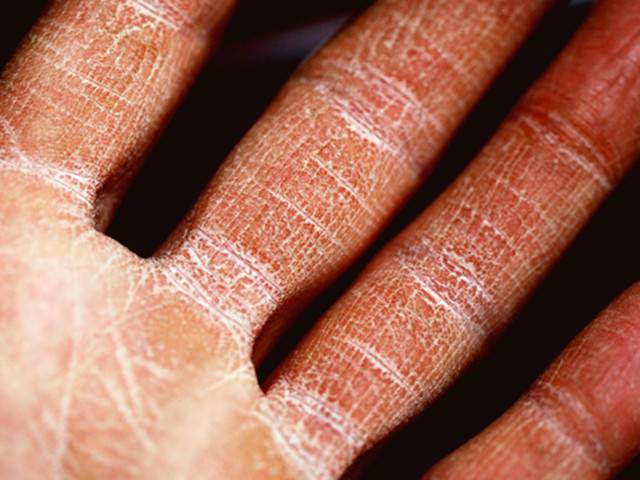7 Common Skin Disorders and Their Treatment

There are several skin disorders people often experience that vary in terms of severity and symptoms. Some are permanent, while others are temporary. Some may be painful, while others might not be noticeable at all. Some are major, while others are minor. And lastly, some may be genetic, while others may be caused by external factors.
Getting a skin disorder in any capacity may stress you out and may even impact your self-esteem. This is why early diagnosis is the key to effective treatment. Here are some common skin disorders you should look out for.
Warts
Caused by the HPV or the Human Papilloma Virus, warts refer to skin growths that can occur on the feet or hands. While there are several strains of the Human Papillomavirus, not all of them cause warts on the feet.
Plantar warts are the ones you commonly find on feet. These can often be a source of pain. Since they're also contagious, they can spread to another person or even other parts of your own body.
Thanks to the technological advances in medicine, wart removal is now possible through the "Swift Wart Therapy." By using microwave technology, this treatment can treat warts without damaging the skin surface. It works by heating the infected area for just about two seconds. The procedure is repeated up to 5 times, depending on how good or bad the situation is.
The heat may cause slight discomfort, but the procedure is relatively quick and requires only a day to be administered. The patient does not necessarily require dressings or extensive downtime. In fact, there might not be much pain involved either.
Acne
Scars caused by acne are commonly found on the face, chest, shoulders, upper back, and neck. The breakouts may appear on your face in the form of whiteheads, blackheads, cysts, and pimples. If acne scars are left untreated, they may darken and become permanent.
Professionals often recommend a certain dose of Benzoyl peroxide for mild acne. A combination of topical creams or gel is also prescribed based on how severe the acne is. It is also believed that microdermabrasion combined with laser therapy is effective in treating acne. However, consulting a doctor is highly recommended before making a leap.
Blisters
Blisters are watery areas on the skin. Even though they are extremely small in size, they may become apparent if they occur in a group. However, they are not limited to a particular area of your body and can be found anywhere.
If a blister hasn't popped, try to loosely cover it with a bandage and do not apply pressure. On the other hand, if a blister bursts open, clean the area with some gentle soap and warm water. Avoid applying iodine or alcohol and use a prescribed ointment to the target area to prevent further irritation.
Blisters often start out milder but may become serious if you notice any signs of infection around the area. Consult your doctor in case there's any pus or unusual patches around the target area.
Rosacea
While mild rosacea is common, other people experience a chronic version of the skin disorder. For some people, it goes away while others may experience it again after some time. Relapses are often a result of intestinal bacteria, stress, sunlight, alcohol, and even spicy food.
Unfortunately, there is no permanent cure, but the symptoms can be managed using doctor-prescribed drugs. Some of them often include azelaic acid, brimonidine, and isotretinoin, etc.
Eczema
Eczema is a condition that appears in the form of white and yellow flaky patches. If an area of your skin is affected, you may notice the patches getting itchy, oily, and red. You may also experience hair loss in the target area.
There isn't a single type of treatment to control eczema. However, depending on the type and severity, there are multiple interventions one can try. For effective management, it's important to get it diagnosed early and start treatment as soon as possible.
For mild cases, professionals often recommend a carefully-planned skincare regime, but may prescribe medication or therapy for more serious cases. Common therapies used in the treatment of eczema are light therapy and wet dressings.
Measles
Measles is a common occurrence and is often recognised by symptoms such as watery eyes, sore throat, fever, runny nose, cough, and loss of appetite. The rashes may spread from your face all the way down to your body within five days of the appearance of symptoms. There may also be red spots with a white centre inside your mouth.
There isn't any set course of treatment for the condition, but people are often recommended to stay away from others as measles can spread easily. It usually gets better in around ten days.
Ringworms
Ringworms are rashes surrounded by a raised border. The affected area feels very itchy and can also spread if somebody else uses a towel or fabric touching the infected area. If the affected skin area comes into contact with another person's skin, they may also develop ringworms.
The usual course of treatment involves staying away from water, keeping the area dry, and applying anti-fungal creams based on what your doctor suggests. They usually take two to three weeks to resolve and may take longer to heal if the prescribed course of treatment is not followed.
Conclusion
Taking skin disorders lightly may result in serious consequences later. While most of them can be treated easily using a few home remedies or prescribed medicines, others may require a major intervention such as surgeries or laser treatments depending on the type and severity of the condition.
If you notice unusual symptoms due to a skin disorder, contact your professional right away. Early diagnosis is the best way to reduce or treat a skin condition before it gets to the point of no return.
MORE



